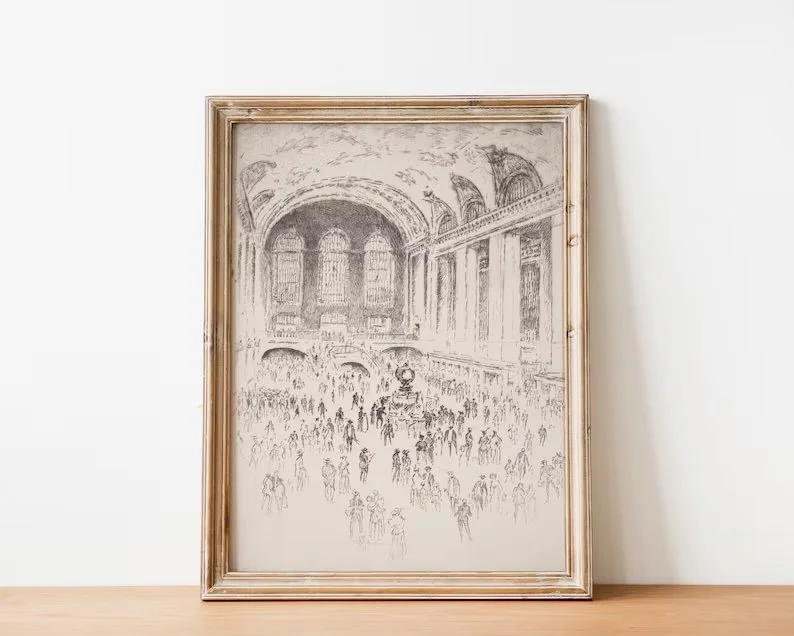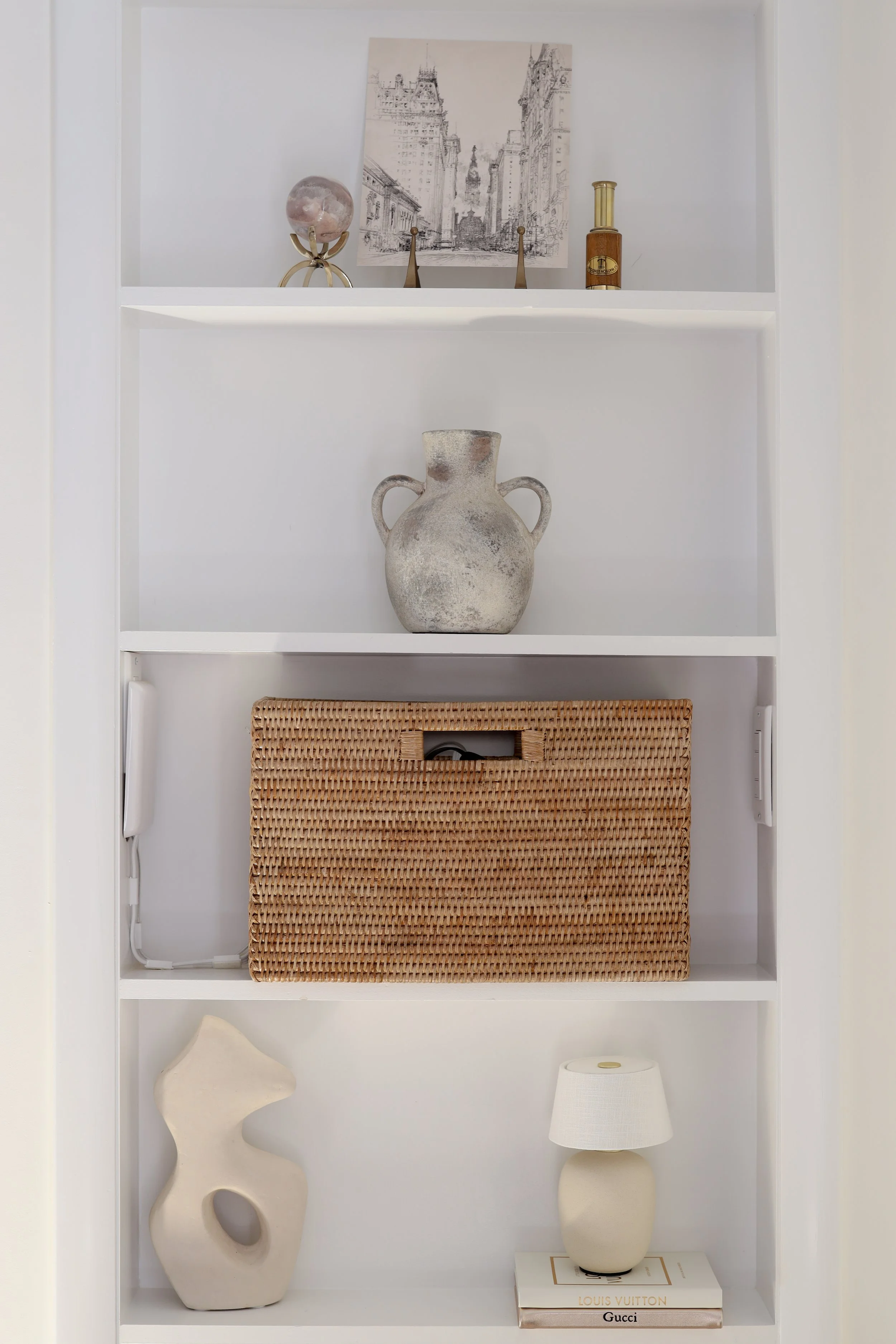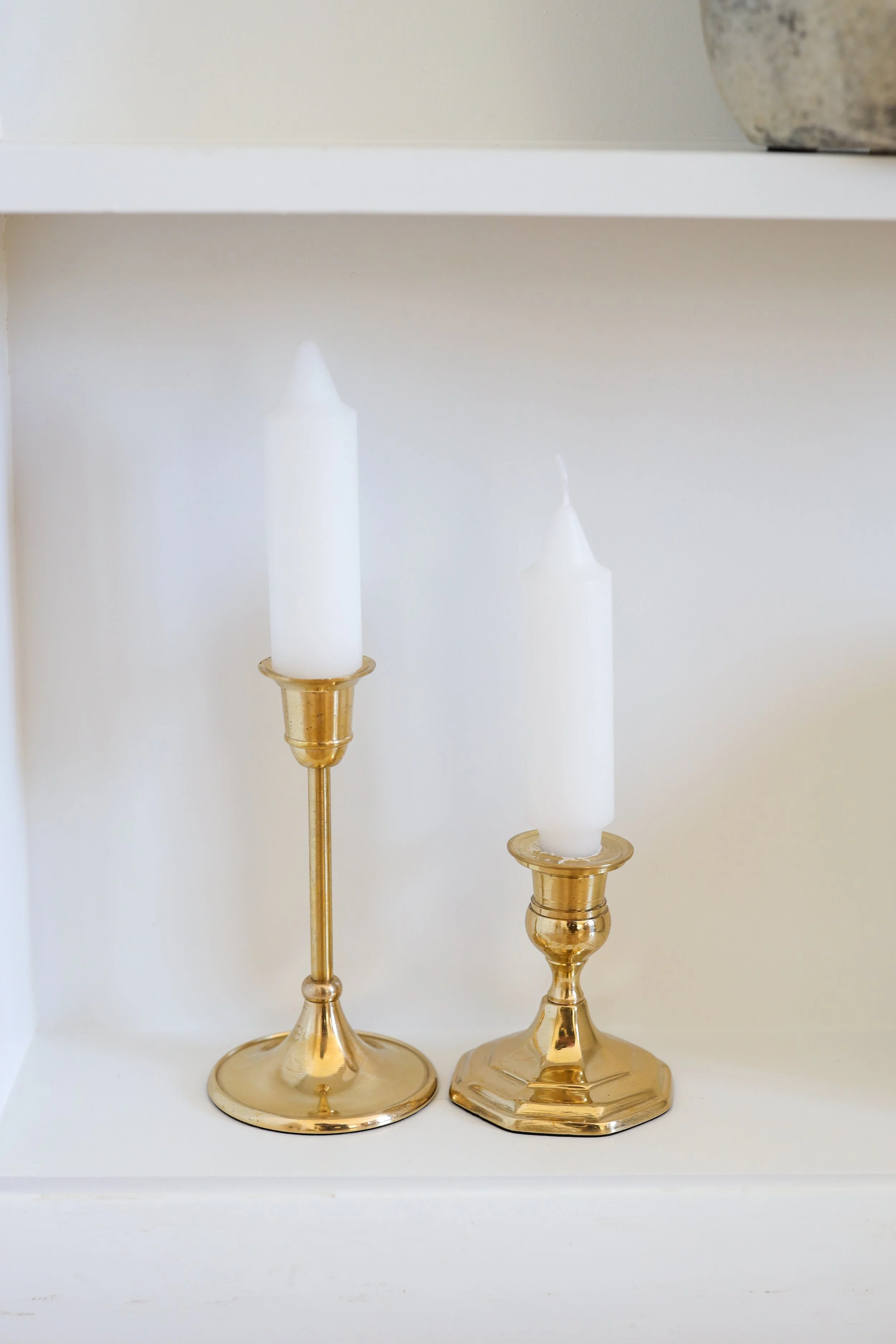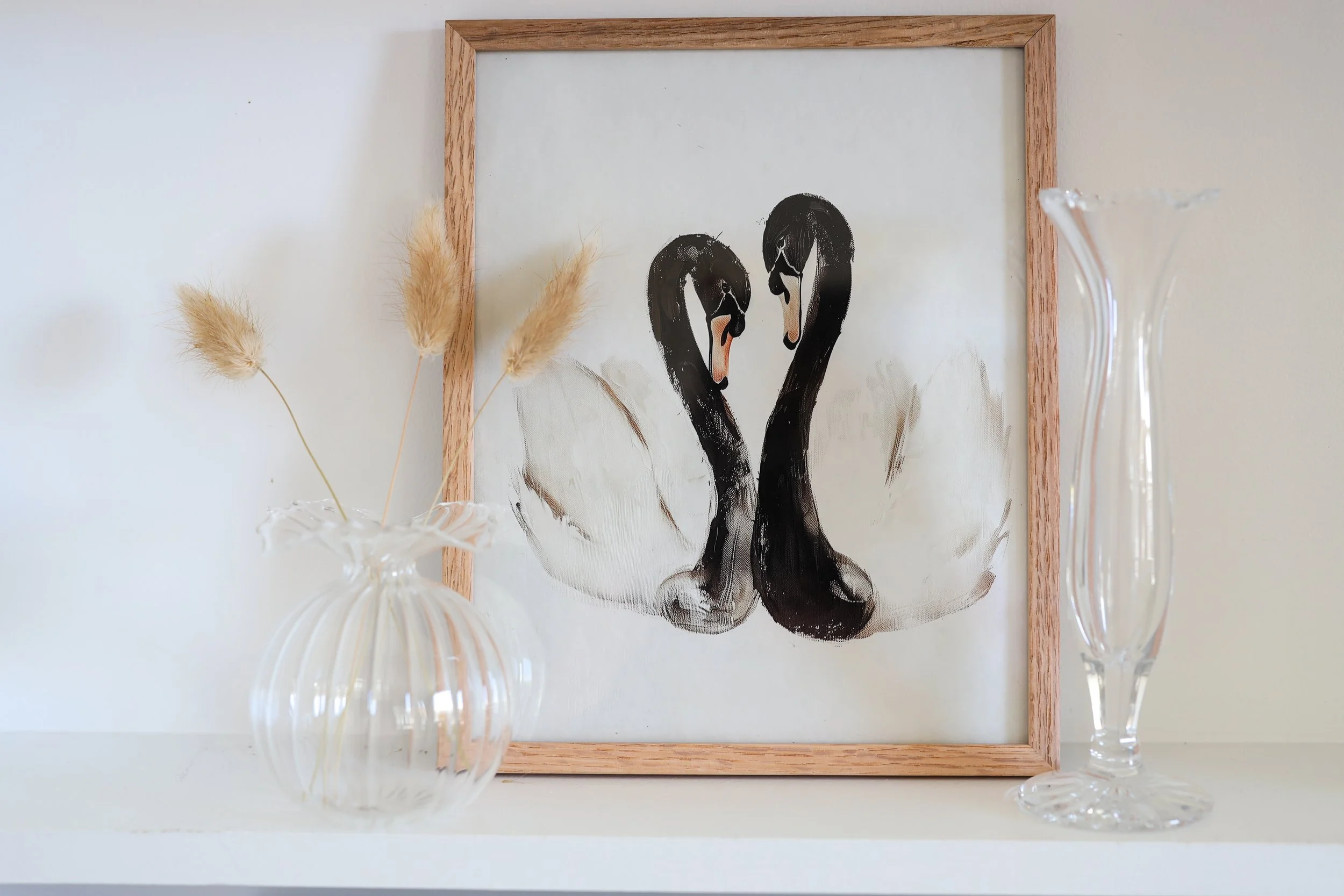How To Decorate Shallow Shelves
We’re incredibly fortunate to have a living room with soaring ceilings and a stunning fireplace as the focal point. But the wall behind the fireplace felt plain and needed something to draw the eye up.
The solution? Installing a set of shelves on either side.
The catch? We decided to recess the shelves into the existing wall, leaving us with only about 5 inches of depth to work with.
As you could imagine, styling such a shallow space came with its own set of challenges. But after some trial and error, I’ve found ways to make them work beautifully, and I’m excited to share my tips on how you can make the most of them in your home.
Find Items that Fit
The biggest challenge with shallow shelves is sourcing items that actually fit. When your shelf space is only 5 inches deep and 13 inches tall, even something as simple as finding the right books can be tricky. Start by looking for pieces with a depth or circumference equal to or smaller than your shelf depth. Be meticulous about checking the dimensions of items you’re ordering online, and don’t be shy about bringing a small tape measure with you when shopping in-store.
If you need some inspiration, here are some of the items that have worked beautifully on my own shelves:
Vases
A slender vase is an ideal choice for shallow shelves. Whether you prefer a simple glass vase or something more textured, vases add height and elegance to your display. They can be filled with fresh flowers or greenery or left empty, like I did.
Art Prints
Small, framed art prints are a fantastic way to add personality to your shelves. Choose prints that echo the room's colors and theme, and consider leaning them against the wall for a relaxed, layered look. You can even mix in a few different sizes for added visual interest. I chose a few digital prints from Etsy that reflected my style and told my local story, then used ProDPI (my favorite printing service) to get high-quality art prints in various sizes, mostly 8x10.
Picture Frames
Personal touches like framed photos make shelves feel more intimate and meaningful. Choose a mix of frame styles or keep them consistent for a more uniform look. Just make sure they’re slim enough to fit comfortably on your shelves.
Small Books
Books with interesting covers or spines can be both functional and decorative. Stack a few horizontally for a base to elevate smaller objects or stand them upright for a more traditional look. Be mindful of the depth—choose slim books to fit without protruding.
Candlesticks
Tall, thin candlesticks are perfect for adding vertical interest without taking up too much space. Opt for metallic finishes, sleek black designs, or even wooden candlesticks to complement your room's aesthetic. I chose this pair of brass candlesticks I found on Etsy and paired them with short taper candles to create a warm and inviting atmosphere.
Small Decorative Objects
Small decorative objects like mini sculptures and ceramic pieces are perfect for adding a touch of charm and filling in gaps. Look for items that reflect your personal style, whether that’s a minimalist ceramic figure or a quirky, vintage find. Or display some of your favorites from your recent travels.
Keep It Simple
One of the most common pitfalls when decorating shelves is the temptation to do too much (trust me, I’ve been there). Keeping things simple makes each piece stand out and creates a more polished and harmonious look. Here are some of the ways I was able to get the look I wanted without overwhelming myself.
Limit the Number of Items
Instead of filling every inch, choose a few carefully selected pieces that align with your decor style. You can dedicate an entire shelf to one large, impactful piece, such as a striking vase or a framed artwork., or you can arrange two items on a shelf, such as a framed photo beside a decorative object or storage box. The symmetry and simplicity of a pair can create a balanced, serene look.
Use a Cohesive Color Palette
Stick to a cohesive color palette to ensure your shelf styling looks intentional and well-curated. Choose colors that complement the room's overall design and repeat these hues in the objects you display. I opted for a neutral color palette of white, cream, and gold to seamlessly blend with the rest of the room.
Use Negative Space Wisely
Negative space—the empty areas around and between objects—is just as important as the items themselves. It gives the eye a place to rest and helps to highlight the objects you’ve chosen to display. Don’t be afraid to leave some shelves partially empty; this can make the entire arrangement feel more intentional and balanced.
Mix Things Up
Mixing things up is one of the best ways to create a visually engaging and dynamic display. Variety adds interest, making your shelves feel more curated and less predictable. While shallow shelves do present some limitations in terms of space, it’s entirely possible to introduce variety and keep things interesting. Here’s how I did it.
Create Odd Groupings
One of the most effective techniques for decorating shelves is to create odd groupings. Odd numbers, such as groups of three or five, naturally create a sense of balance and interest, break symmetry, and encourage the eye to take in each element individually while also appreciating the overall composition.
Play with Height and Scale
Varying the height and scale of the items on your shelves is a great way to create visual interest. Mix taller objects, like slender vases or candlesticks, with shorter items, like small sculptures or plants. This contrast will keep the eye moving and prevent the display from looking flat.
Mix and Match Textures
Mix different textures to add depth to your display. A smooth ceramic vase, a rough-hewn wooden object, and a delicate glass piece can create a rich, tactile contrast that draws the eye.
Embrace Layers, But Keep It Light
Even though you’re working with a limited depth, you can still create layers to add dimension. Lean a small picture frame against the wall behind a vase, or place a stack of tiny books underneath a decorative object. But be mindful not to overcrowd the space—stick to just a few layers to maintain a clean, uncluttered look.
Step Back and Edit
Once you’ve arranged your items, step back and take a look at the overall display. Does it feel balanced? Does each piece contribute to the look you’re going for? If something feels off, don’t be afraid to edit and make adjustments. Sometimes, removing one item can make the whole display feel more cohesive.
Happy styling!
























